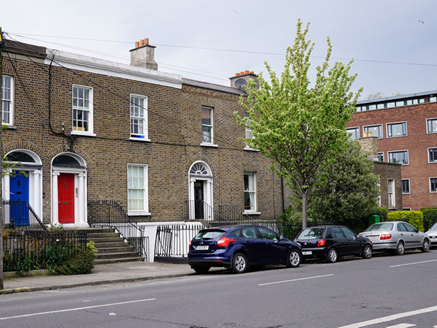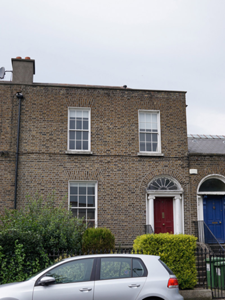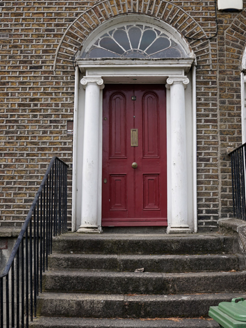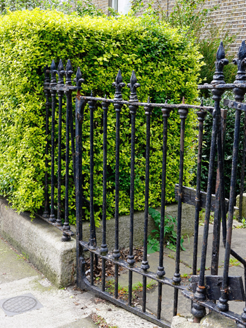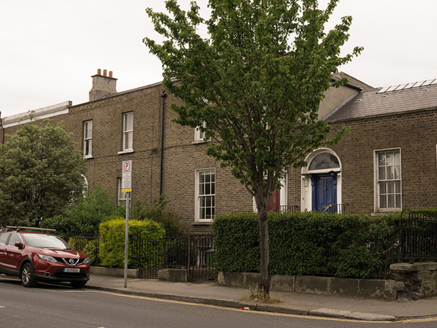Survey Data
Reg No
50110271
Rating
Regional
Categories of Special Interest
Architectural, Artistic
Original Use
House
In Use As
House
Date
1840 - 1860
Coordinates
315357, 233054
Date Recorded
30/04/2017
Date Updated
--/--/--
Description
Terraced two-bay two-storey over basement house, built c. 1850, as one of terrace of four. Hipped slate roof with clay ridge tiles, partly hidden behind brown brick parapet. Rendered chimneystacks. Brown brick, laid in Flemish bond, to walls. Cut granite plinth course and lined-and-ruled rendered basement walls. Rendered walls to rear (west) and north elevations. Square- and round-headed window openings having rendered reveals, granite sills and one-over-one pane timber sliding sash windows. Round-headed door opening with moulded render surround. Doorcase comprising Ionic columns supporting panelled cornice. Petal fanlight and timber panelled door. Granite platform and steps having wrought-iron railings, some on cut granite plinth wall. Cast-iron gate with fleur-de-lis finials and matching railings set on carved granite plinth wall. Limestone and granite paving stones to path.
Appraisal
This house, along with its neighbours, dominates the north end of the street due to its form and scale. It is enhanced by the retention of historic features such as the classically influenced doorcase, fanlight and windows. The ironwork adds technical interest, attesting to the quality and craftsmanship in mid-nineteenth century metalworking. Heytesbury Street, named after Baron Heytesbury, Viceroy 1844-6, was first laid out in 1846 and was nearing completion by 1861. The streetscape maintains much of its original character, with well-preserved classically-influenced brick houses, many with Greek revival details, creating a strong sense of rhythm and order.
